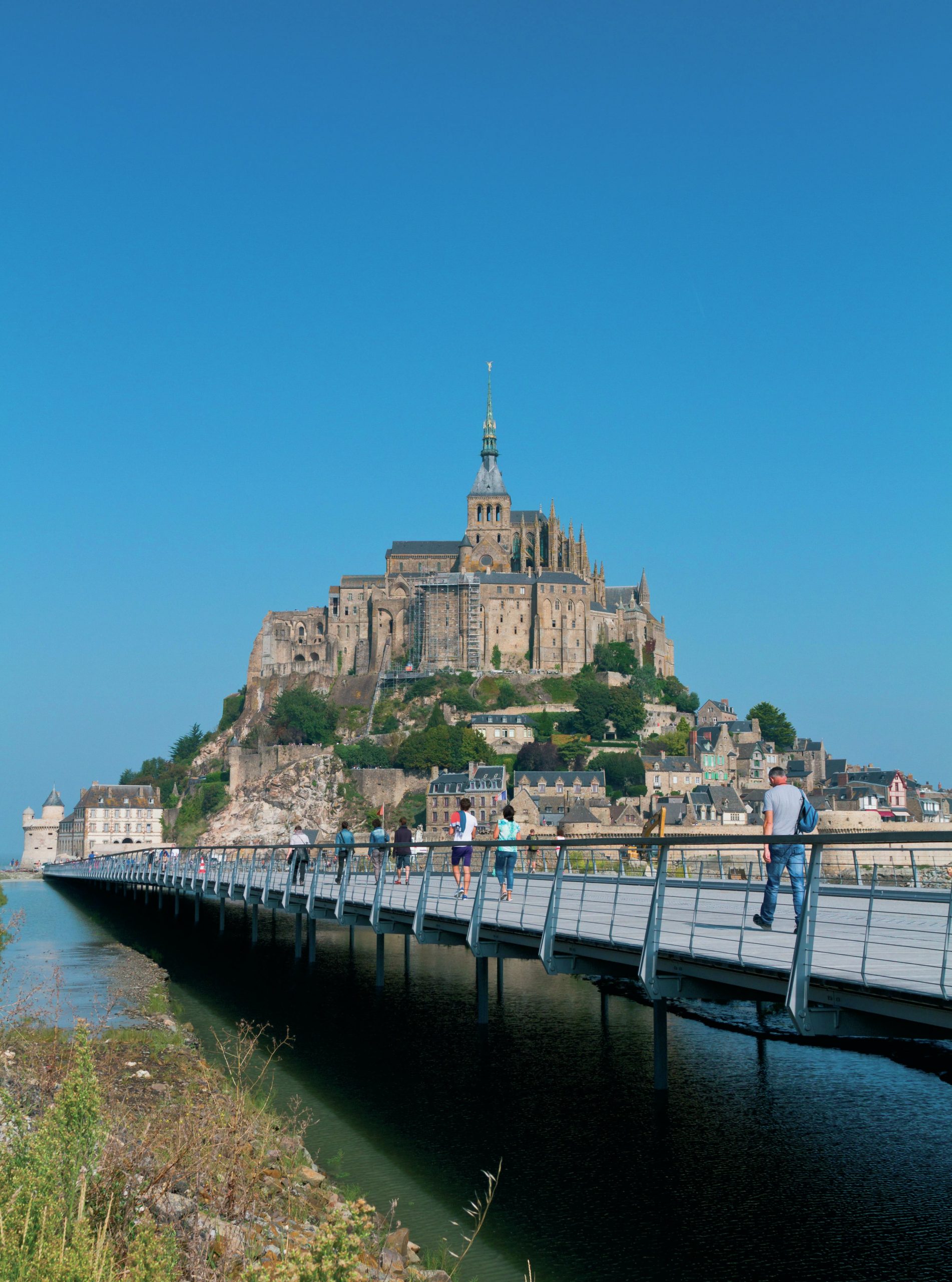
Since the 1990s France has been the world’s leading tourist destination, with approximately 80 million visitors each year. It has the third largest income from tourism after the USA and Spain. Paris is the obvious tourist destination in France, but Mont St Michel, a tiny island off the Normandy coast, receives 2.5 million visitors every year despite its less accessible location. This UNESCO World Heritage site is in danger of losing its striking character as an island and being absorbed into the mainland. Large-scale engineering works costing £166.5 million have been undertaken to protect it.
Mont St Michel is a rocky island, approximately 1 km2 in size. An abbey (built between the eleventh and sixteenth centuries) and a small village are perched on the island. It is situated between Saint Malo and Avranches, close to the border of Normandy and Brittany, at the mouth of the Couesnon River (Figure 1). There are numerous hotels and restaurants on the island itself and on the mainland, and the area is surrounded by attractive countryside. Mont St Michel is popular with heritage and religious tourists, as well as those who want to enjoy the beautiful views or the local French cuisine, which includes distinctive saltmarsh-grazed lamb.
Your organisation does not have access to this article.
Sign up today to give your students the edge they need to achieve their best grades with subject expertise
Subscribe




